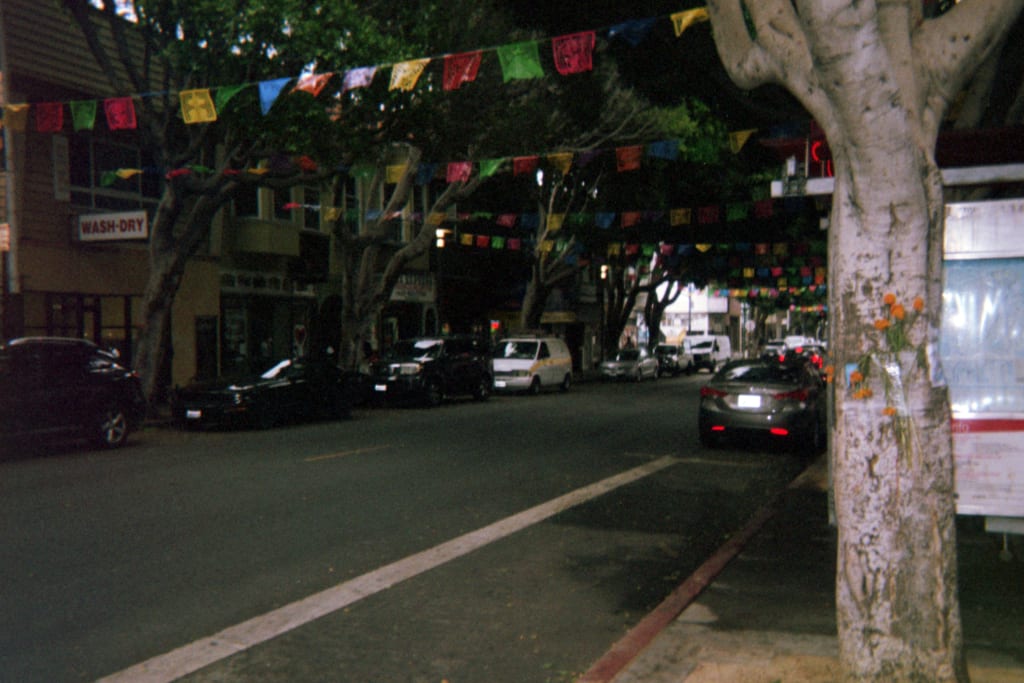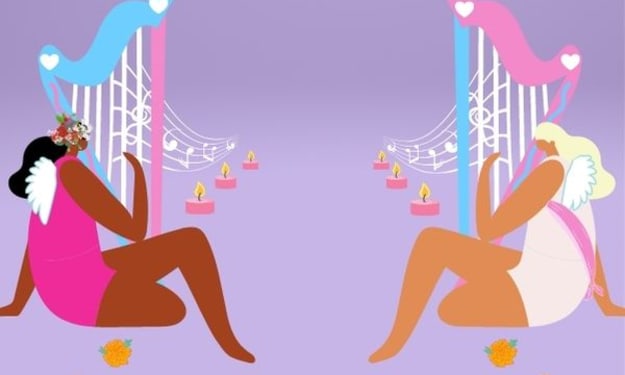
I was slow to accept the psychic death happening to the only place I’ve ever called home - the city of San Francisco. The ghost of what it used to be haunting the hollow, empty buildings awaiting renovation or summer guests. Now in another state, and from a distance - I can’t look away - no matter how heartbreaking.
I’ve survived chronic homelessness in the city. Calling it houselessness to make it sound better...doesn’t. Most people don't really live in houses but rooms, apartments, complexes. I heard the logic behind that is that we call the streets our home or something? I’m hurt you’d think I could ever claim them, the shelters, and the cruel people who run them both - as part of my home. Precious showers are timed and arriving minutes past curfew can result in expulsion into the cold, asphalt streets. There’s nothing that feels like home about the dehumanization I and many others have come up against. Home is safe, warm, and yours to decorate.
Once, revolted with food and housing insecurity, I walked down 18th. I kicked down three sidewalk signs for an Open House happening on South Van Ness and was left more filled with rage after seeing how my actions shrunk in comparison to my hunger. On 18th again, a hipster in a square polka-dot dress yelled at me to pick up my dog’s shit to which I replied, “Your presence in this neighborhood is even more disgusting, gentrifier!” She said that since it was “my city” I should “look after it better” so I bagged it up and tossed it at her. I still remember plotting when the laundromat-cafe opened on Mission and 20th. I wanted to snap blue ballpoint pens in half, stroll in and chuck them into the spinning washing machines. The clothes of young urban professionals or yuppies, would be left tumbling in a dark blue-ink spiral and finally then- something in my immediate environment would reflect my inner world.
Street photography allowed me to see beyond my tunnel vision. It was a form of time-travel, capturing flashes in history by living in the present, they’d be immortalized hereafter. Once, I overheard elders on the 24 talking about The Old Fillmore and started crying, because who’s going to tell those stories when they and their memories are gone and someone , someone has to archive them because even in death , it’s necessary to say, “We were here.” Fighting erasure and displacement is in my blood as a Native person. The Mission - the neighborhood I’ve lived in the longest - is my strength and example. I pray next to a photo of the old trees on 24th covered in marigolds before they got cut down by SF Public Works on my altar and will continue to do so in eternal love.
I’m nonbinary and sick of hearing housed people encourage other housed people to move here for queer community. As someone who was raised on exploiting my trauma for government and nonprofit relief, I know the ins and outs of how my city brands and presents itself. Yet, I’d be remiss if I didn’t say that it truly isn’t much more progressive than any other place in the state. In fact, the city government and police force are notoriously anti-homeless and with their insidious sweeps evict hundreds of the homeless population at a time, a huge chunk of whom are LGBTQ+. But the clientele my city seeks are not those queers, rather the ones who donated to Pete Buttigieg’s campaign and go to SoulCycle on Wednesdays. The KKKastro is only a safe space if you’re white. You get more looks walking into a gay bar as a young Brown local than you do fully naked as an old, white gay moseying down Castro Street. And still, the Tenderloin , whose dirty motels I spent a part of my childhood in becoming the first trans cultural district is not a win for me or my trans family, because few trans elders still live there; they've been ignored by the medical institutions, evicted and targeted by the police for decades. The cultural district status only serves to continue the cycle of development. Those who were put on a bus here are still homeless in underfunded shelters. The queer revolution doesn’t exist here or in corporate SF Pride. The time has come for an end to rainbow-washing and for sincere conversations about class.
People say SF is just swimming in nonprofit money. It’s true, that’s why a lot of people move here, to start their art and activist careers from which the “revolution” will follow. The nonprofit industrial complex is the best outlet for tech moguls to “give back” and wipe away their guilt for slowly killing our city and its people. Our football team’s colors are red and gold but I’m more familiar with one of the two.
When housed transplants whine about their nonprofit jobs serving my trans, homeless San Franciscan communities - a job I and other locals would love to have - I see red.
When punks set off fireworks at a homeless encampment that’s a fire hazard at risk of eviction I see red.
When tenderqueers have consent discourse all day but don’t realize homeless people can’t turn down money or enthusiastically consent to raves at their sites, I see red.
When there’s a spot giving free meals to trans people of color interrogating my Black friends if they’re trans, I see red.
These same transplants who own the spot would deny the Black homeless elders they’ve displaced free meals because they aren’t trans.
There’s a special kind of despair when you seek home in a place that commodifies your culture and identity, but has no room for you. To escape homelessness and housing insecurity only to have my dad and brother fall back into it has brought me there. Trauma crystallizes, replicates itself like a fractal, forming decorative patterns that are dangerously pleasing to eyes, within and without. I’m up to here hearing people talk about how they’re from here, myself included. Commodifying ourselves and our born-raised culture is really played out and I often worry about the effects of gentrification on our states of mind. I’m not judging at all - placing sacred fragments of our being in a display case is the game we learn to play in the West. And yet, artists are often the spearheads of gentrification, knowingly or unknowingly. Public art can pave the way for developers and become a status symbol for new residents. In some cases the work is stripped of its context and nuance like murals in “graffiti tours.” In other cases, commercialization and expansion was always the intention. Finch’s honey bears are a good example of this. The trans-flag colored honey bear at the SF LGBT center was a reminder of the individualistic, copy/paste framework that representation politics says we need to follow to be a successful artist.
I’m uncertain about the future. I tried to imagine my city decades from now and all I saw was beautiful chaos, Mission kids running in the painted streets under polluted skies. I don’t know how to get there, how to repair the harm done in San Francisco over the decades and now, after half a million people left in 2020. Some of us got our rent lowered, some of us got displaced with it. I do know that despite how small we’re made to feel, as local artists and queers, we can talk to our neighbors and create spaces for ourselves. The epidemic of empty buildings in San Francisco don’t just point to what used to be, but what could be.






Comments
There are no comments for this story
Be the first to respond and start the conversation.